Your Cart is Empty
Mar 01 2020
Guide to Selecting High Quality Leather

Leather is a natural organic material... which means that each piece you buy is unique. Add to that, leathers come from a variety of different animals. And then add to that, each tannery creates their leather using unique process and usually sells multiple brands of leather each made with their own process. All this variety is a great thing for the leatherworker, but can be overwhelming if you don’t understand the variables and what situations they are needed for.
So let's talk variables...
Vegetable Tanned vs. Chrome Tanned. There’s a lot that goes into each of these tanning processes. What’s important to know is that one uses vegetal oils (from tree bark) to tan and another uses chemicals (chromium) to tan it. Vegetal tanned leather, generally referred to as veg tan, takes a longer amount of time to create, is considered higher quality, and therefore costs more. Chrome tanned leather has a quicker turn around time and therefore costs less.
The end product of these two processes are drastically different. Veg tan is generally thicker, more firm, and more durable. It’s the kind of leather you see in a nice pair of leather shoes. Chrome tanned is thin, very stretchy, and less durable. It’s the kind of leather that you see in a car that has a leather interior.
Each has it’s uses, but all guides and products on this website used veg tanned leather.
Cows vs. Other Mammals. There are a number of different animal leathers that are available to the leatherworker. Each have their own properties and different uses. Cow leather is the most available and works with most projects. As you’re getting started stick to cow leather to have a consistent medium for your work.
Thick vs. Thin. The first thing to know is the thickness of leather is generally measured in weight (oz) instead of thickness (mm). This will probably be a little confusing, but while you get used to it you can refer to this guide to translate. Each project requires a different thickness of leather. For example you wouldn’t want to use 10oz leather for a watch strap because it would be disproportionately large and probably not fit through the slot on the watch. You also wouldn’t want to use 3oz leather on a belt - it would be mangled in a day. As you are trying to decide what kind of leather keep in mind that generally the thicker the leather then less pliable the leather will be, but there are other factors that play into this. All in all, this is more of an art than a science, but you will definitely get a feel for it.

Supple vs. Rigid. As mentioned above, this is, in part, dictated by the thickness of the leather. However, the tanning process and the location of the cut also play into this. Some companies tumble their leather in a drum during the tanning process. A lot of tumbling means that the leather will come out pretty supple. Whether leather is supple or rigid is hard to gauge just by reading a description, and yet it’s a really important decision. You wouldn’t want to make a backpack out of rigid leather because it would be extremely uncomfortable. And you wouldn’t want to make a belt out of supple leather because it would lose its form. The best way to gauge this is by going in and seeing the leather for yourself.
Back vs. Belly. Animal skin is taut in some places and very loose in others. For instance the leather around the shoulders of a cow is thick, durable, has a tighter grain, and does not stretch much. The leather from the belly of a cow is not as thick, has a looser grain, and will stretch over time. The bend (behind the shoulders and not the belly) is somewhere in the middle. The cut of leather you buy also plays into how supple or rigid it will be.
Thick vs. Thin. The first thing to know is the thickness of leather is generally measured in weight (oz) instead of thickness (mm). This will probably be a little confusing, but while you get used to it you can refer to this guide to translate. Each project requires a different thickness of leather. For example you wouldn’t want to use 10oz leather for a watch strap because it would be disproportionately large and probably not fit through the slot on the watch. You also wouldn’t want to use 3oz leather on a belt - it would be mangled in a day. As you are trying to decide what kind of leather keep in mind that generally the thicker the leather then less pliable the leather will be, but there are other factors that play into this. All in all, this is more of an art than a science, but you will definitely get a feel for it.
Selecting the right leather is more of an art than a science. As you continue doing leatherwork you will get a better grasp on what you want for your project. I really suggest going in to see the leather if you can. If not, most tanneries have scrap laying around from the leather they are selling. They are usually happy to send you samples of the leather if you ask.
top grain leather vs. genuine leather
Many of you may have questions about the difference between top grain leather and genuine leather. But what exactly do these mean? When you're buying your fancy leather briefcase, jacket, or shoes, you should know exactly what to look for in your leather. Well today I would like to shed some light in this area of understanding hoping to make the difference between the two clear to you.
Full grain leather is a full body leather, with all the imperfections and inherent toughness of the material. It is one of the most natural and durable leather on the market.
It's often used for heavy-duty leather items, like weapon holsters and utility belts. But it can also be used (with great success) for dress belts, briefcases, dress shoes, work boots, and numerous other leather goods.
Full-grain is hard-as-nails leather that will develop a rich patina as it ages, looking more and more beautiful as you use it. It's widely recognized as the best and highest-quality leather money can buy.
Often much more expensive, full-grain pays dividends with its durability. If you invest in an item made with full-grain leather, you will probably have that item for the rest of your life if you take care of it properly.
For leather lovers who prefer to keep their top grain leather without scratch or burn, you can buy a leather milk product to keep your leather conditioned and without scars, I personally love the scars, I think they offer character and tell a deep story of love.
Genuine leather doesn't just mean that the product is made of real leather (which it is), but it also means it is the lowest quality of all products made out of real leather.
Genuine leather is a highly processed leather.
Genuine leather is scaled back to a very thin substance and usually dyed heavily and sometimes it is painted, stamped, or sealed causing it to look almost "pleathery" if you will.
Genuine leather products are designed to last on its best day for about a year maybe two before you start seeing wear and tear, most of the time genuine leather is non repairable. This grade of leather is acceptable if you're just buying something cheaply and don't care too much about its quality. It won't last very long, so it probably shouldn't be something you use every day.

The tools of the trade and a few of the possibilities.
It's our pleasure to design and select leather goods with legacy in mind!
leather bags and accessories.
Liquid error (templates/article.pagefly.bc56ebe9 line 49): product form must be given a product
Article credit : Gold Bark Leather and Oak River Company

